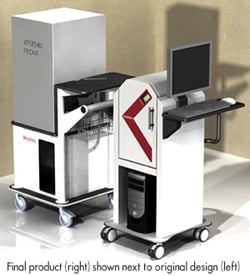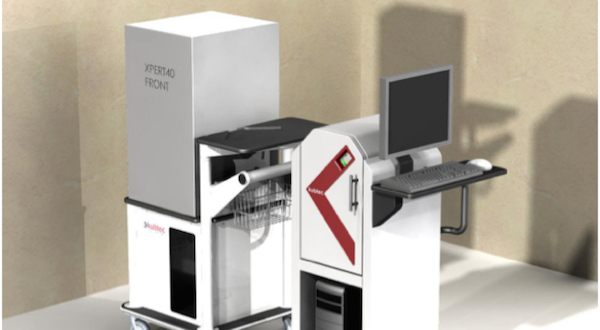At HUI Manufacturing, we know as well as anyone that new technologies in the medical field can be short-lived, and we work closely with our clients to maximize the longevity of their medical cart designs. What might have been considered a “must-have” in 2010 could easily be labeled “obsolete” when compared to the latest offerings in 2015, and we strive to ensure that your cart works effectively the entire time—even if it means making major changes alters its design.
To aid your awareness of the different ways that HUI Manufacturing can help redesign your custom medical cart for the lowest price and maximum efficiency, here’s a real-life example of how we were able to improve one of our client’s carts.
The Problem
A medical device company approached us to redesign the enclosure (chassis) of their current X-ray cart. Because their product lines had grown, they originally wanted a cart with a large design suited for a number of different components and configurations.
Despite its extra room and functionality for multiple components, the large design was ultimately unappealing to customers and made it difficult to perform maintenance in the field. The new design would have to maintain a sleek profile, while also allowing for the detector or camera to be replaced easily in the field.
The Obstacles
In order to create a smaller cart that also made the camera more accessible, we had to overcome several design challenges.
- The client’s product development budget and price point were extremely aggressive, forcing us to find a low-cost solution while maintaining a high level of quality
- The engineering documentation for all of the components was very limited, meaning much of the redesign was actually completely original
- Making the camera more accessible also created some potential radiation hazards, which weren’t an issue with the larger design
- Creating custom packaging for the device and cart, which was quite complex due to the nature of the cart’s equipment.
The Solution

Using our special engineering modeling and configuration print process, we were able to identify three potential product configurations that would allow us to simplify the design. In the end, we were able to create a product that is not only smaller than the competitor’s, but also provides easier access to the camera for workers in the field. We were also able to maintain the cart’s flexibility for multiple product configurations and eliminated any potential radiation leaks.


